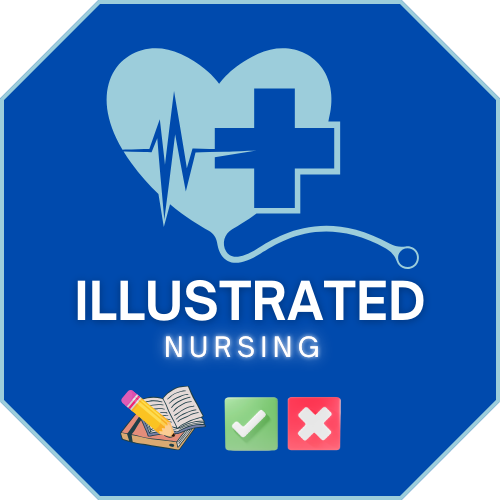About Lab Values
Congratulations, you are taking the NCLEX at the perfect moment in history. No need to memorize lab values
135- 145 mEq/L
3.5-5.5 mEq/L
95-105 mEq/L
9-11 mg/dL
1.5-2.5 mg/dL
2.5-4.5 mg/dL
7-20 mg/dL
0.6-1.2 mg/dL


Critical Values
- Hypoxemia
- Hyperkalemia and hypokalemia
- Hypoglycemia
- Acidosis (low pH)
- A client with a sodium of 130 will live, but a client with a potassium of 6 can die any moment. Hyperkalemia stops the heart.
- Hypoxemia, acidosis, and hypoglycemia also kill.
- Of course, by ABC rules, HYPOXEMIA is always #1 (anything related to breathing takes priority= low/high respirations, low oxygen saturations, low pO2, airway obstructions, etc….).
- Let’s talk about this ABG
- ABG: pH 7.35 pCO2 50 pO2 78 HCO3 28
- This client has a normal pH and high pCO2. Notice that HCO3 is elevated. This client has been retaining pCO2 and over time the kidneys have compensated by getting rid of H+ ions (or acid) and becoming more alkalotic to neutralize the respiratory acidosis caused by COPD. We will review this in future lessons. This ABG is abnormal but stable. This client will live.
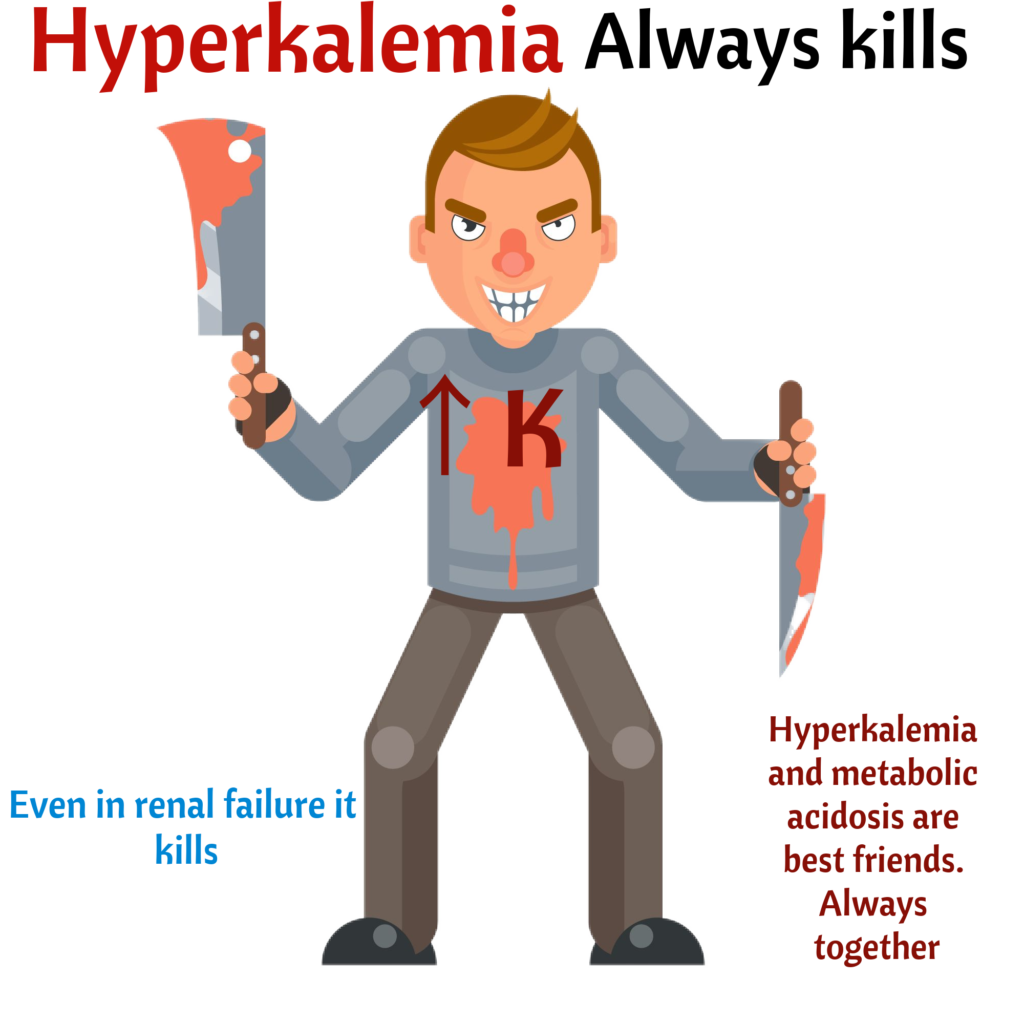
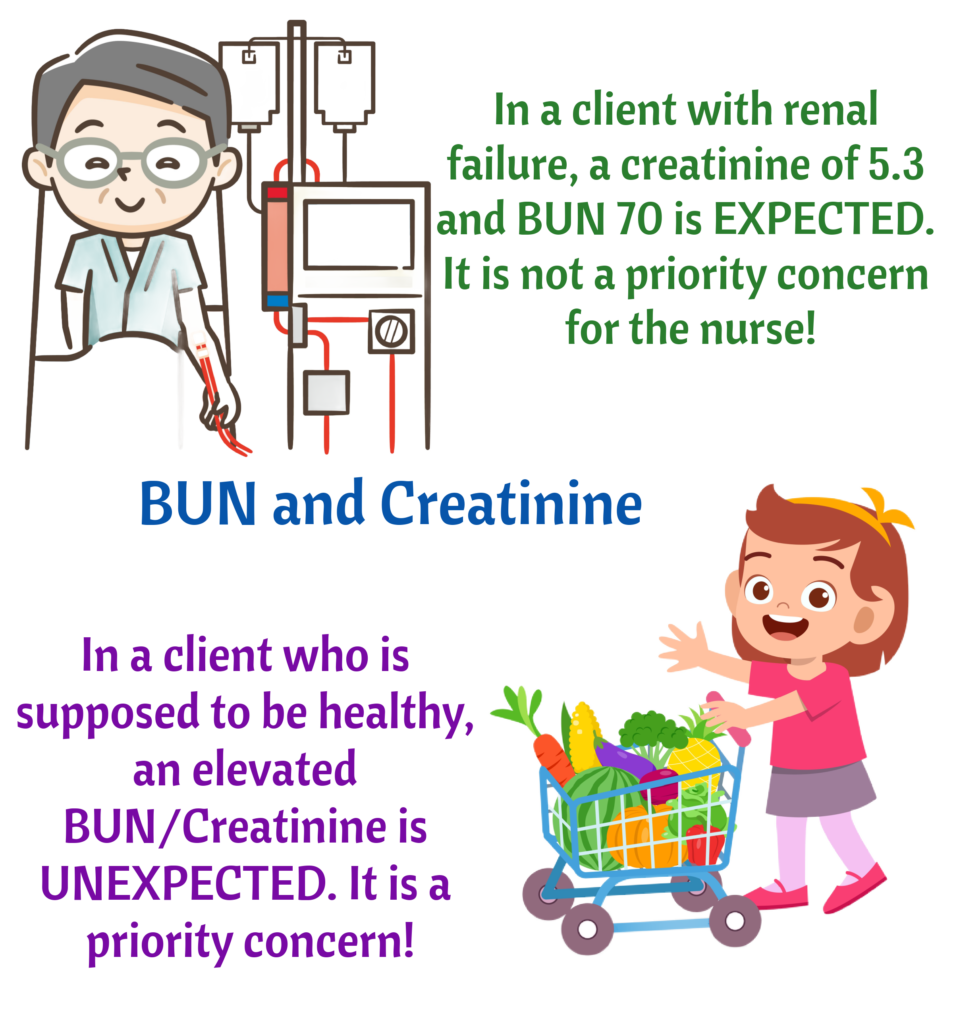
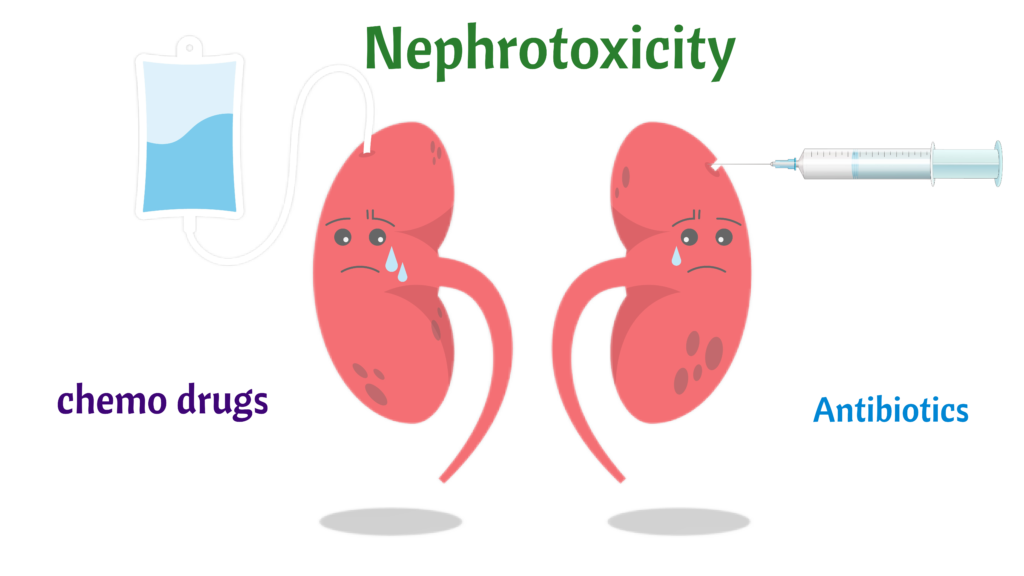
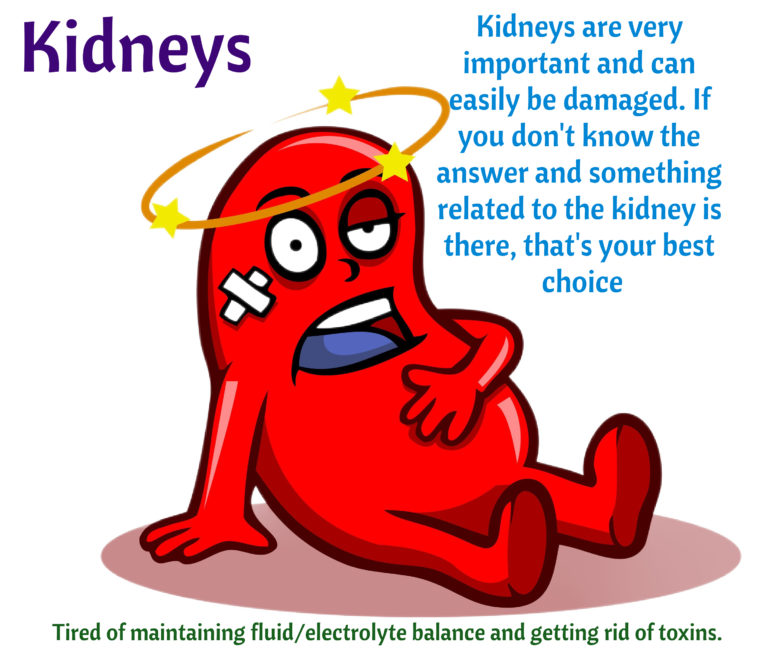
Let's do some thinking
Tumor Lysis Syndrome
- A medical emergency that occurs when cancer cells break down rapidly and release their content into the bloodstream.
- Leads to the accumulation of uric acid, potassium, and phosphorus, which overload the kidneys’ ability to remove them.
- Results in severe electrolyte imbalances, metabolic acidosis, acute kidney injury, and even death if treated.
- Treatment: Hydration, allopurinol, monitoring of electrolytes, uric acid, and creatinine levels before and after initiating chemotherapy.
Just know your lab values
Click on the headings “History,” “Nursing Notes,” & “Laboratory” to expose the content.
The client is a 55-year-old male admitted to the emergency room for generalized weakness. The wife reports that the client has become progressively weak over the past week. The client has a history of hypertension, diabetes type II, and smoking (1 pack/day x 15 years). Current medications include: Losartan 50 mg daily, glipizide 5 mg BID, and lipitor 40 mg daily.
Client follows commands and moves all extremities. S1 S2 with an audible S3 present. Lungs with bilateral crackles at the bases. All peripheral pulses palpable. 2+ edema to bilateral extremities, + periorbital/facial edema. Foley catheter inserted per MD order. 50cc of Dark brown urine in Foley bag.
Vital Signs: Temp 98.3 °F, BP 100/52, HR 54, RR 24, and Oxygen Saturation 88%
You will be given normal values on the NCLEX!
- Sodium 130
- Potassium 6.0
- Chloride 93
- HCO3 16
- Creatinine 2.3
- BUN 75
- Remember ABC. Hypoxemia is priority. If hypoxemia was not a choice, then hyperkalemia would be the answer. It is just so easy to just give oxygen as the first intervention!
- S3 is caused by “rapid” filling of the left ventricle due to fluid overload. S4 is created by the movement of blood during diastole from the atria flowing against a stiff ventricular wall caused by hypertension, pulmonary hypertension or ventricular outflow obstruction. Bottom line S3=fluid overload and S4=high blood pressure.
